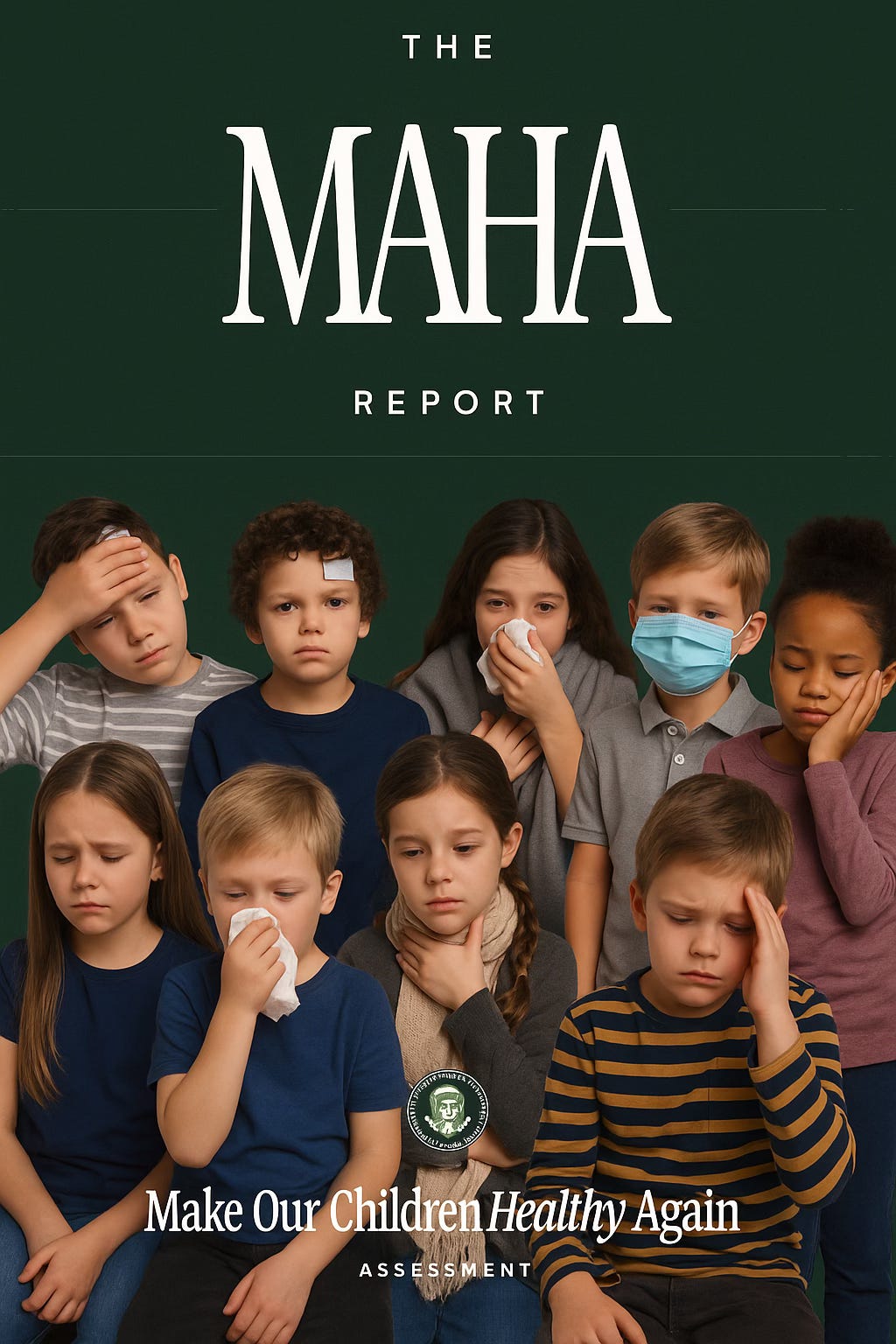- Pascal's Chatbot Q&As
- Posts
- MAHA report is not a sincere attempt to address childhood chronic disease; it is a political Trojan horse—a vehicle for distrust, deregulation, and disinformation, wrapped in the language of science.
MAHA report is not a sincere attempt to address childhood chronic disease; it is a political Trojan horse—a vehicle for distrust, deregulation, and disinformation, wrapped in the language of science.
It identifies real concerns but exploits them to undermine the institutions best equipped to address them. It does so by manipulating citations, fabricating evidence & treating ideology as fact.
The MAHA Report – Pseudoscience, Propaganda, and the Dangers of Government-Mandated Misinformation
by ChatGPT-4o
The “Make America Healthy Again” (MAHA) report, released by the Trump administration under the direction of Secretary of Health and Human Services Robert F. Kennedy Jr., is presented as a groundbreaking effort to confront the pediatric chronic disease crisis in the United States. While its initial premise—highlighting the growing burden of youth health issues—is timely and important, a deeper dive into both the report and its reception reveals a document riddled with errors, distortions, and ideologically charged pseudoscience.
I. Surface-Level Credibility vs. Structural Deception
The MAHA report claims to be based on over 500 scientific sources and “gold-standard” evidence. In reality, as revealed by independent investigations and internal inconsistencies, the report contains:
Fabricated studies (e.g., citing non-existent JAMA Pediatrics papers),
Misattributions of authorship, where real scientists were surprised to be listed as contributors to imaginary research,
Mischaracterization of legitimate studies, with conclusions twisted to fit a conspiratorial narrative.
Upon analyzing the full text of the MAHA report itself, even more troubling patterns emerge.
II. Additional Issues Identified Within the MAHA Report
1. Citations to Dubious or Non-Scientific Sources
While the report includes references to reputable institutions, it also mixes in poorly sourced material, including:
Blogs,
Self-published white papers,
Advocacy group materials presented as peer-reviewed science.
One footnote links to a nutritionist’s blog as justification for sweeping claims about neurotoxicity from food dyes—without indicating the anecdotal or unreviewed nature of the source .
2. Conflation of Correlation and Causation
The report repeatedly asserts causal relationships (e.g., between chemical exposure and autism or ADHD) based on observational or correlational studies without appropriate caveats. For instance, it references rising diagnoses of ADHD and autism alongside increases in screen time and processed food consumption—then implies direct causality without addressing confounding variables or controls .
3. Selective Quoting and Cherry-Picked Data
Numerous sections quote studies out of context to support alarmist conclusions. For example, a CDC dataset on childhood obesity is cited in isolation, while ignoring the broader public health context—such as socioeconomic factors, genetic predisposition, and access to healthcare .
4. Ideologically Driven Framing of Public Institutions
The report accuses agencies like the NIH, CDC, and FDA of being “captured” by corporate interests. While regulatory capture is a legitimate concern in policy discourse, the MAHA report treats it as an unquestioned axiom rather than offering rigorous evidence. This framing is used to discredit vaccines, public health guidelines, and scientific journals wholesale.
5. Absence of Peer Review or Methodological Transparency
Nowhere in the document is there a clear account of methodology for how sources were selected, weighted, or analyzed. This violates basic principles of scientific reporting and renders the document unreproducible and non-falsifiable.
III. The Political Objective Masquerading as Health Policy
The report reads less like a neutral governmental assessment and more like a manifesto. Kennedy uses the platform to advance long-standing anti-vaccine and anti-establishment views. His rhetoric attacks the entire modern public health infrastructure, claiming it has been corrupted beyond repair. Policy recommendations—like banning fluoride in water or eliminating most pediatric vaccinations—are not just unorthodox, but dangerous when legitimized by a federal platform.
This is compounded by Kennedy’s recent statements threatening to bar NIH scientists from publishing in “corrupt” medical journals and discouraging public trust in mainstream scientific institutions.
IV. Why This Matters: The Dangers of Government-Led Disinformation
Publishing pseudoscience under the guise of official federal health policy is more than just unethical—it’s structurally dangerous.
1. Undermines Scientific Legitimacy
If citizens can no longer distinguish between real science and political fiction in government publications, it leads to a collapse of public trust. This affects not only health outcomes but also democratic functioning and national resilience in times of crisis (e.g., pandemics).
2. Corrupts Future Policymaking
When bad science informs policy, it opens the door to laws that harm rather than protect. For instance, discouraging vaccines and removing fluoride from water supplies would reverse decades of public health gains.
3. Embeds Ideology in Bureaucratic Machinery
By cloaking a political agenda in the formal tone and appearance of a scientific report, the administration effectively institutionalizes conspiracy thinking within the civil service.
4. Global Consequences
As a global leader, the U.S. sets precedents. A White House–endorsed pseudoscience document undermines international norms for scientific cooperation and health governance, especially in forums like WHO and the G7.
V. Conclusion: A Public Health Trojan Horse
The MAHA report is not a sincere attempt to address childhood chronic disease; it is a political Trojan horse—a vehicle for distrust, deregulation, and disinformation, wrapped in the language of science. It identifies real concerns but exploits them to undermine the institutions best equipped to address them. Worse still, it does so by manipulating citations, fabricating evidence, and treating ideology as fact.
Governments owe their citizens rigorous, transparent, and evidence-based policy. When they instead deliver propaganda dressed as science, the outcome is not just misleading—it is dangerous. If reports like MAHA become a blueprint for policymaking, we risk not only poor health outcomes but a full-blown epistemic crisis: a society where truth is negotiable, and power rewrites science to suit its agenda.
